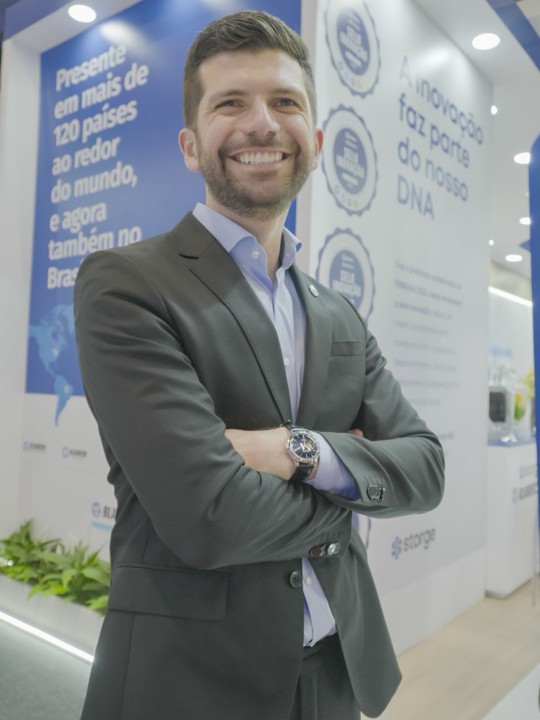Jornada Paranaense de Microeletrônica
AUDITÓRIO I (INFERIOR) ENGENHARIA QUÍMICA
5/11/2025 – quarta-feira

9h30 – 12h
Sessão especial CI Inovador – circuitos de RF
Development and integration of an NB-IoT front-end in 65 nm CMOS technology
T. H. Freitas; A. A. Mariano; L. H. A. Lolis; B. Leite; T. Z. Faccin; T. Taris; J. B. Begueret
Wideband Riemann pump DAC in 65 nm CMOS for software-defined radio applications
Gustavo Boscardin; André Augusto Mariano; Bernardo Leite; François Rivet; Hervé Lapuyade; Yann Deval
12.95 GHz SiGe power amplifier with 26.1 dBm Psat and 31% PAE for 6G applications
Cesar Cristofoli; Bernardo Leite; André Mariano; Nathalie Deltimple
Slow buck converter design for envelope tracking in 6G RF power amplifiers with integrated passives
Luis Palomino Bolivar; Nathalie Deltimple; Bernardo Leite; André Mariano
Comparative analysis of windmill frequency dividers and ILVCOs for frequency synthesis in an N-path switched-capacitor filter
T. Z. Faccin; T. H. Freitas; A. A. Mariano; L. H. A. Lolis; B. Leite; J.-B. Bégueret; T. Taris
Parasitic effects on millimeter-wave oscillator waveforms
Euro P. Almeida; Bernardo Leite; André A. Mariano; Yann Deval
Casamento de impedâncias na banda W para amplificadores de banda larga
Lucas Pawelski; André Mariano; Bernardo Leite; Sylvain Bourdel; Rémy Vauche


13h30 – 14h30
Palestra 1
Semiconductors behind RF connections
14h30 – 15h30
Palestra 2
Memory, design, and Cadence: a personal journey through semiconductor innovation




16h – 17h
Palestra 3
Empreendedorismo e inovação: da ideia acadêmica ao mercado com controladores STG
6/11/2025 – quinta-feira

9h30 – 11h
Sessão 2 – Comunicações e dispositivos
Projeto e otimização de acopladores para amplificador balanceado em radiofrequência
João Perbiche; Bernardo Leite; André Augusto Mariano
Methodology for extracting the effective channel length in junctionless nanowire transistors using gate capacitance analysis
Marcelo N. Santos; Rodrigo T. Doria
Ajuste capacitivo aplicado a acopladores híbridos em quadratura integrados
João Perbiche; Bernardo Leite; André Augusto Mariano
Comparação de desempenho entre os esquemas FMT e DMT em canais PLC de banda estreita
Pedro da Veiga; Evelio Fernandez; Ândrei Camponogara
14h – 15h30
Sessão 3 – Linearização e modelagem de amplificadores de potência

Modelagem comportamental de amplificadores de potência usando polinômios com memória
André Pozzan; Eduardo Gonçalves de Lima
Modelagem da inversa de um amplificador de potência utilizando um perceptron
Manuela Xavier da Silveira; Eduardo Gonçalves de Lima; Sibilla Batista da Luz França
Estudo e implementação de um modelo baseado em polinômio de memória
Lucas Tavares Rockembach; Sibilla Batista da Luz França; Eduardo Gonçalves de Lima
Otimizacão de filtros FIR para reducão do espalhamento espectral causado pela saturacão do sinal em banda dupla concorrente
Clayson Oliveira; Luis Schuartz

15h30 – 17h
Sessão 4 – Simulação de circuitos
Simulação de banda dupla concorrente utilizando envoltória equivalente
Luís Miliavacca; Luis Schuartz
Análise em equilíbrio harmônico em circuitos contendo elementos de ordem fracionária
Amanda Morente; Eduardo Lima
Descrição de circuitos em regime permanente senoidal no domínio da frequência usando mínimos quadrados
Lavínia Francine; Eduardo Gonçalves de Lima
Modelagem comportamental de circuitos lineares em regime transitório e permanente
Adriely Teixeira de Paula; Eduardo Gonçalves de Lima
7/11/2025 – sexta-feira

9h30 – 11h
Sessão 5 – Projeto de amplificadores RF
Amplificador de potência balanceado com modulação de carga para melhoria de eficiência na região de recuo
Alexandre Z. de Morais; Cesar B. Cristofoli; João P. Perbiche; André A. Mariano; Bernardo Leite
Design and large-signal analysis of a stacked CMOS power amplifier with optimized biasing
Cauê Carneiro; Fávero Santos; Bernardo Leite
Uma revisão de arquiteturas de moduladores híbridos de alimentação em tecnologia CMOS para amplificadores de potência em RF
Natália Kowaltschuk; Fávero Santos; Pyter Silva; Hugo Baldo; André Mariano; Bernardo Leite
Design of a 27.1 dB and 522 MHz bandwith OTA for envelope tracking multimode power amplifier
Hugo Baldo; Fávero Guilherme Santos; Natália Carvalho Kowaltschuk; Pyter Ely da Silva; Bernardo Leite; André Augusto Mariano
11h – Encerramento e premiação

